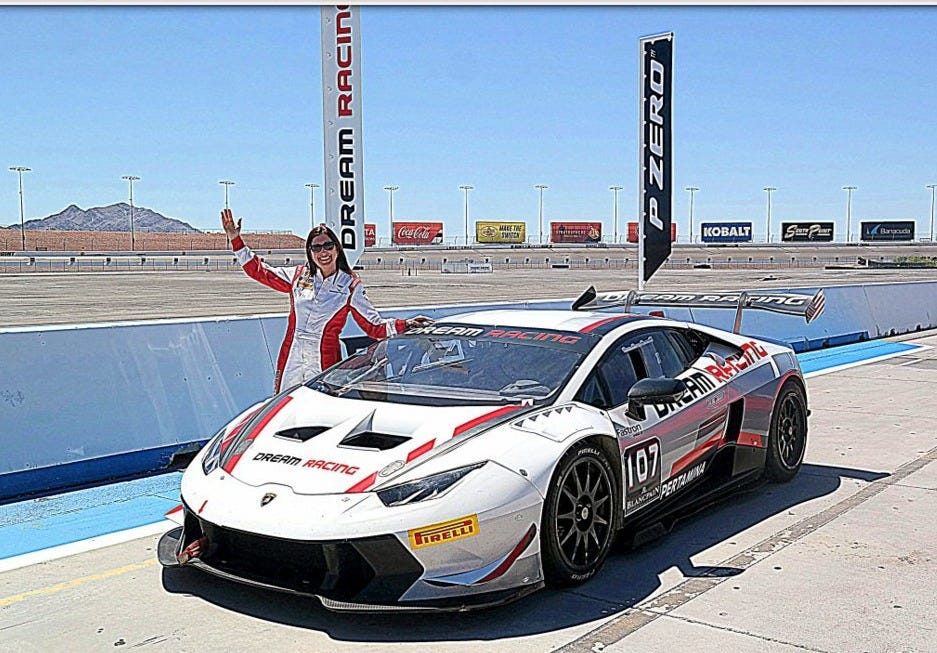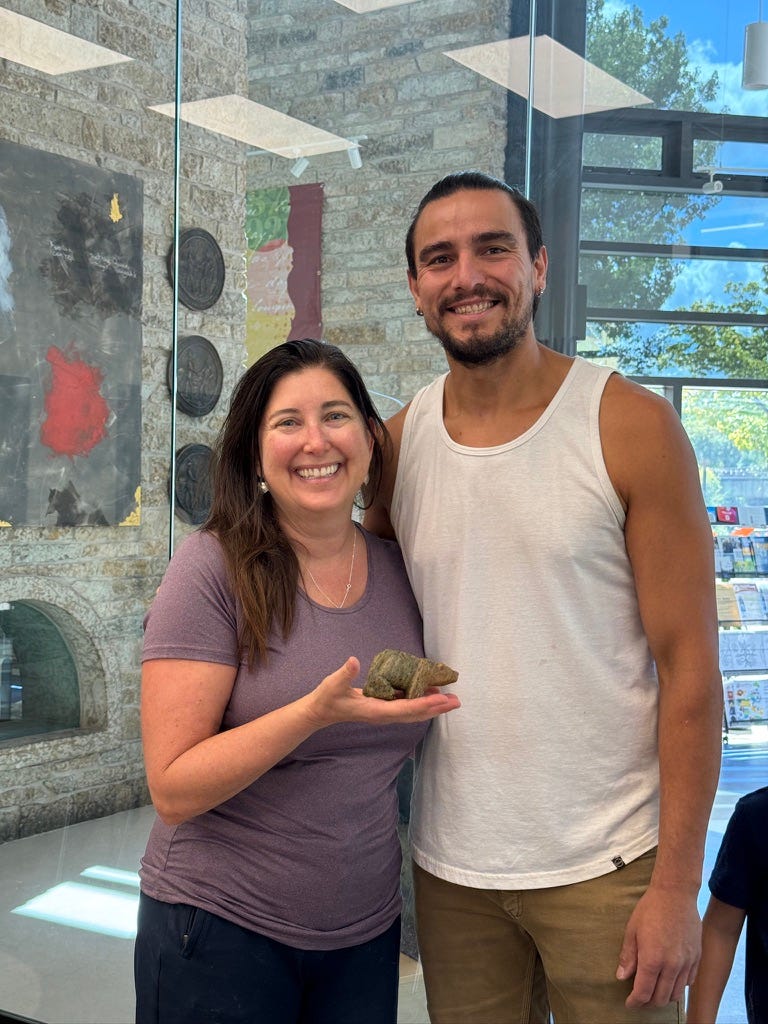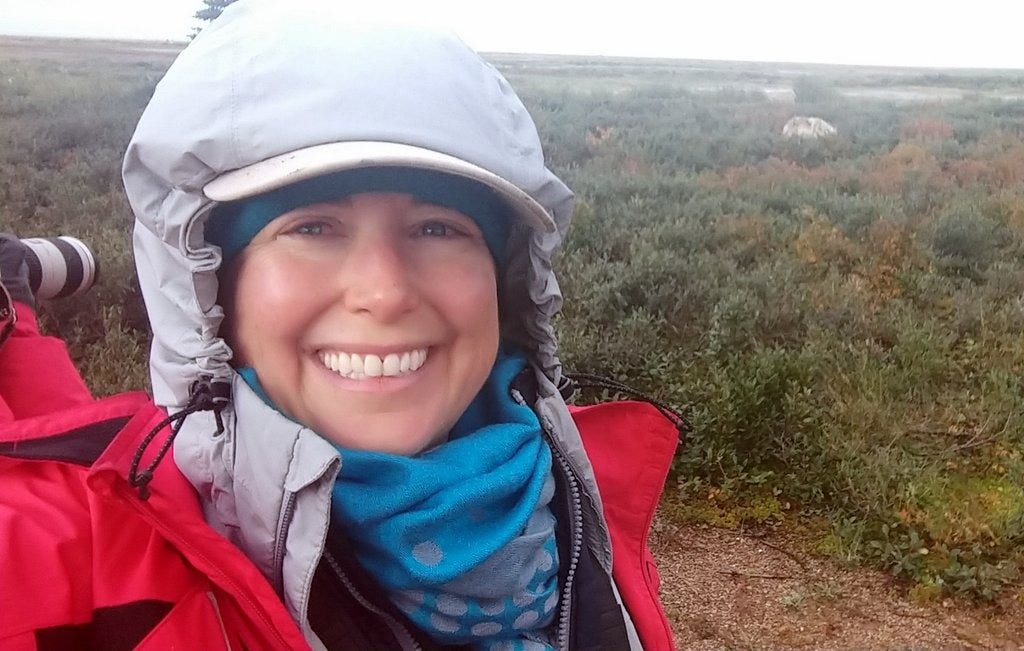Brave-ish: A Conversation with Travel Journalist and author Lisa Ellen Niver
Niver is an inspiration for lots of reasons, not the least of which is that she's unafraid to reinvent herself—and she always makes it work
When I met Lisa Niver in a writing workshop a few years ago, I was impressed with her confidence and with her commitment to her career as a travel journalist, a career that has taken her to 103 countries and given her some amazing opportunities—scuba diving with barracudas in the Philippines, hula-hooping with Maasai warriors in Tanzania, running kids’ programs at Club Med locations and on Princess and Royal Caribbean cruise ships, driving a Lamborghini 150 miles an hour on a race track in Las Vegas.
You only have a career like that, I figured, if you’ve spent your whole life gearing up for it.
Boy, was I wrong. When I read Niver’s 2023 memoir Brave-ish: One Breakup, Six Continents, And Feeling Fearless After Fifty, I discovered she’d never set out to be a travel journalist. She actually went directly from the University of Pennsylvania to the University of California San Francisco Medical School in the fall of 1989, when she was 21 years old. Her whole life she’d planned to become a doctor, but early in her program at UCSF she began thinking maybe that wasn’t the right career path.
During a one-year leave of absence, she took scuba diving lessons and began doing ceramics—two activities that are still a big part of her life. She also taught preschool and earned a master’s degree in education. Scuba diving can be an expensive hobby if, like Niver, you want to dive in exotic locales. When she learned that one of her sister’s friends had worked at Club Med, she decided that might be a good way to scuba dive on the cheap. The Club Med gig led the way to the cruise ships, which led to the career she has today, doing TV segments, a video podcast called Make Your Own Map, and writing travel stories for publications like Reader’s Digest and companies including Booking.Com and Tylenol.
Brave-ish, which Niver initially conceived as an opportunity to write about the 50 brave things she did before turning 50 seven years ago, has received a pile of honors and awards since it was published, some from familiar sounding organizations (Forbes included it on a Best New Non-Fiction list) and some, like the Hearten Award, that I’d never heard of. But the Hearten Award was, to me, the most fitting, because Brave-ish won in the category of Uplifting & Inspiring Non-Fiction and Memoir.
Brave-ish is very much a travel book—I, for one, am quite envious of the incredible things Niver gets to do and write about—but it’s really a story about hope and fortitude and not giving up, and how, if you combine those three qualities, you can go far.
DW: I started reading Brave-ish thinking it was going to be about your adventures, but it’s not all fun and games and exciting travel. Some of the chapters about you and Fred, your ex, were painful to read. He was physically and emotionally abusive. And you tolerated it. I kept wanting to say, “Lisa, why are you debasing yourself like this? Why are you allowing him to treat you so badly?” I hope you don’t mind that I said that. I realize now it sounds rude—let me interview you and then criticize you!
LN: I appreciate that you wanted better for me, because I wanted better for me, too. And when I was writing the book, I knew how it sounded. My developmental editor and I had a somewhat recurring conversation where I would call her and I would say, “I’m working on the book and I sound so stupid.” She said, “You don’t sound stupid. You seem relatable.” The fascinating thing is, we’re not very kind to ourselves. In fairness, when I could literally and figuratively see better, I did better.
DW: What do you mean, exactly?
LN: My therapist said to me, “Did you not see all the red flags?” and I said, “Yes, I thought it was a parade.” It’s very obvious looking back and writing a whole book about it that each thing was terrible, but it wasn’t obvious in the moment, and especially when [Fred and I] were on the road because there was no one to reflect back to me, nobody else knew what was happening again and again and again so I couldn’t see it. And if you go out with people twice a week and they bicker all the time you’d pull them aside and say, “He’s kind of a jerk.” But if you’re always with new people, everyone thinks, “Oh, they’re having a bad day.” It was very important to me in Thailand, when a new friend, Jessica, told me that Fred could not stay at her house again. She did not like how he treated me. If you have a friend who you are concerned about, saying something could change their life. Jessica did that for me. I never forgot what she said. Eventually I knew it was time to go.
DW: When I said earlier that while I was reading I wanted to thump you upside the head and yell, “Lisa, wake up! Get out of this relationship,” I also thought, “This kind of honesty in a memoir is probably helping people who are in similar relationships.” Do you know if that’s the case?
LN: Many people have reached out to me and said, “I also feel so embarrassed. I don’t know how I got into this situation. I don’t know what to do now, and I don’t want to tell anybody, and it really helped me to read your book.” The other feedback I’ve gotten is that my book is not about blaming.
DW: That was something that really struck me—that even though you make him sound horrible, you also take responsibility. That’s not easy.
LN: When I first worked on the book, I only wrote about the 50 challenges I did to reinvent myself after my divorce. I met with several agents who said I needed to talk about my relationship. I remembered that in a Brene Brown book, she said, “it’s important to share your story with your audience, not work your story out on your audience.” I knew I had to be responsible for my part and focus on moving forward and the future.
DW: Another thing that left an impression on me was how many times you’ve reinvented yourself as a travel journalist.
LN: I remember the game Chutes and Ladders—that’s sort of what I think about as my career.
After 9-11, the travel industry went kaput and I went back to teaching, and I was traveling with Fred, and things were great, and then, whoosh, back down the ladder. Then I started doing travel writing and sharing travel segments on TV and then Covid happened and it was back down the ladder. Obviously, it happened to the entire globe. I remember people saying, “If I hear that word pivot one more time…” But you just have to start again.
DW: What advice do you have for people who have to keep reinventing themselves?
LN: I like the proverb that says: “Fall down seven, get up eight.” The best choice is to keep going. Being teachable and coachable helps. Let other people help you. One of the things that I like to do in different parts of the world is art. This summer, I was in Winnipeg before my walking polar bear safari with Churchill Wild and went to a soapstone carving workshop. Every time [the teacher] came over to me and said, “Would you like help with that?” I said “Yes, help me.” He would explain, “See how, if you do it like this, then it looks like the bear is walking?” and “Don’t forget about the cute tail” and I asked, “What about the eyes?” He said, “No, we don’t do eyes. The eyes don’t look good. Work on the ears. Ears look good. Nose is good. Not eyes.” I appreciated his hands-on approach to instruction. I noticed that some people preferred for the teacher to explain it to them and try as much as possible on their own. I considered my piece to be a collaboration!
DW: What are some of the favorite adventures you’ve had over the course of your career?
LN: I’m just back from Ireland, where I got to try falconry, where a Harris hawk is on your glove and the hawk flies away and comes back. It is so incredible. I have done it twice in Ireland at both Ashford Castle and where I stayed this time, Drumoland Castle. There is a stunning walled garden, and at sunset, I hula-hooped in the garden. I also stayed at AbbeyGlen Castle, and I had a turret, like in the movie “Tangled.” After my soapstone carving workshop, I went back to walk with the polar bears with Churchill Wild again. Every day I woke up and thought, “This is so phenomenal! We’re going to walk with the polar bears? Who does that?” In 2018, I was at the Nanuk Polar Bear Lodge, and I saw polar bears and wolves for the first time. This time I went to a different lodge, the Seal River Lodge, and we had multiple days out walking with the polar bears. We also went on the zodiac boat with thousands of beluga whales. One of the things that’s fascinating about polar bears is that they actually eat the beluga whales.
DW: People think polar bears are so cute and harmless—I blame those Coca Cola ads. In reality, polar bears are really not that nice.
LN: Well, I think they’re mostly just hungry.
DW: I remember reading an article about Churchill, how even the people who live there are told not to go out at night because they might get attacked by polar bears. So it’s not just the whales they’re eating…
LN: Anywhere in the wild, that’s true. You wouldn’t walk around in Great Bear Rainforest and leave food around because this is where the bears live. If people tease a dog and the dog bites them, you would not be surprised. When you are around wild animals in the outdoors, remember you’re in their house. Be respectful.
You can learn more about Lisa and where to buy her book at her web site, https://lisaniver.com/










"Chutes and Ladders" made her entire career make sense for me as a kid who grew up on the game of adventure. Brave-ish is such a great book.
Debby, THANK YOU SO MUCH for this wonderful interview. I so appreciate you and glad we meet at David Hochman's UPOD! Thanks for all of our chats and I cannot wait to come visit. GRATEFUL for you, Lisa